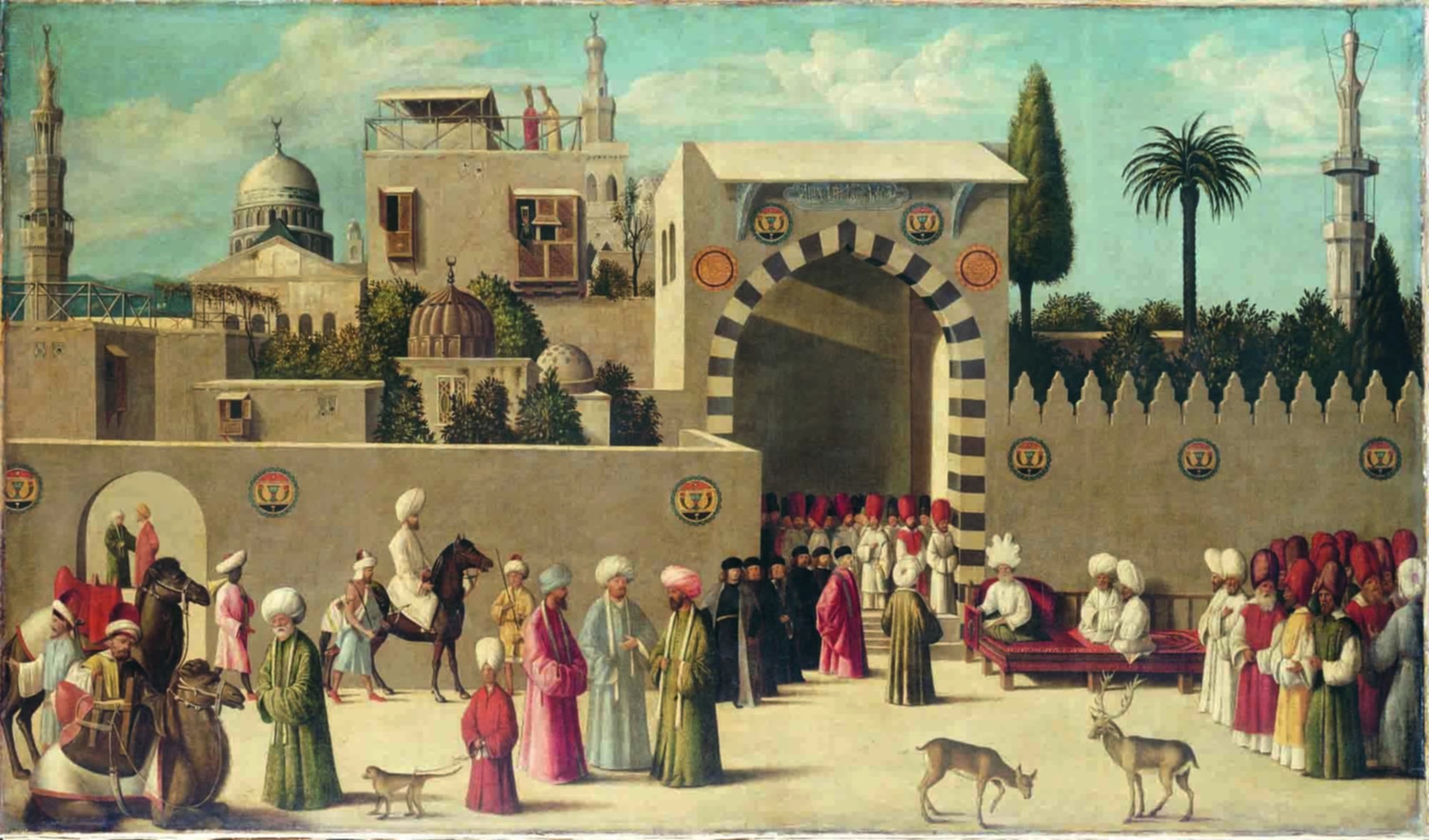
Register a SNAP EBT card with Amazon
'The reception of Ambassador Domenico Trevisiano at Damascus' painting by Gentille Bellini school, 1511
Also known as 'The reception of Ambassador Domenico Trevisiano at Cairo'



This famous canvas, probably painted in the workshop of Gentile Bellini (d. 1507), depicts the Mamluk governor of Damascus granting and audience to some Venetians at the beginning of the sixteenth century. The very exact description of the Mosque of the Omeyyads and Damascan houses in the picture’s background leads us to suppose that the workshop worked on different studies. The emblems depicted – a cup and two gunpowder vessels – belonged to the sultan Qâ’it Bay. But the date the work was finished: 1511, inscribed under the horseman, places this embassy under the reign of Qânsûh al-Ghawrî. The characters appear to be the governor Sîbay, and on the Venetian side Nicolò Malipiero, consul to Damascus that year, or perhaps Pietro Zen, whose face we know from one of Titian’s portraits. This considerable character, who fell to disgrace with the Mamluks because he was involved with the Persian shah Ismâ‘îl, had handed in his accreditation letters in 1508. This is perhaps the moment which is set in the painting.
The embassy took place in a court of which the perimeter wall is broken up by an îwân, a vaulted room open on one side. On the right, a platform has been erected for the governor and his two assessors, all three dressed in white. They are sitting in Turkish style on a rug with octagonal motifs, similar to Mamluk carpets from the period. The governor is leaning against a cushion. His two assessors are probably Hanafi and Shafi’I Ulemas. This protocol reduced to the minimum was the same in Cairo for the ordinary audiences of the sultan. It recalled the very simple customs that took place in Medina, at the time of the Prophet and which were the rule in the first stages of Islam. However, the governor has a head covering with outgrowth which was called a nâ’ûra, “noria”: the waterwheel which reproduced the crown of the Sassanid king in fabric. Only the sultan and certain emirs were allowed to have them. As for Quant aux Mamluks, they are wearing tâqiyyas on their head, a goat’s hair hat dyed red which recalled their Circassian origin.
To the left of the îwân, the Venetians, wearing black, are grouped together behind their consul. The consul is wearing the scarlet toga reserved for the doges. The governor who is listening to the protocol interpreter has placed the accreditation letter on his knees. The audience has just begun. A dignitary on horseback, accompanied by his stable boy, is stopped by a guard who lowers his baton. Behind them, an Abyssinian page brings silk. In the foreground, on the left, two caravaneers are harnessing Bactrian camels.
This ceremony which takes place in Damascus reproduces the Cairo ceremony, when the sultan gave audience in the Citadel. It is not a grandiose occasion like the one that was given by the caliphs of Baghdad and Cordoba to receive the Byzantines. These are people who know each other. The Venetians loved Damascus. Staying there was pleasant and safe. They did not have to stay in a funduq, a closed hostelry. They lived where they felt like and could dress in oriental style. Under the reign of Qânsûh al-Ghawrî, Mamluks and Venetians united once again to fight the Portuguese.
The interview takes place outside, according to a custom which was very dear to the Muslims who did not like confined spaces. This psychological nomadism found comfort in the lightheartedness which reigned over a large part of the court. By integrating scenes of this kind in his composition, the painter has given his subject a peaceful dignity, quite befitting to interpret a moment of diplomacy and balance which emanated from two worlds with the same degree of civilisation.